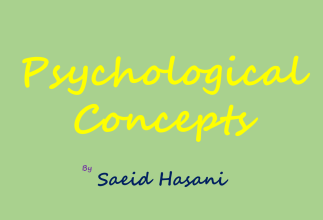Recently, I have been researching identity formation and its process extensively. The reason stems from the ambiguity in my mind, as I seek answers during this period of existential anxiety, which arises from the lack of clarity in my thoughts about myself.
By the way, at the end of this post, you will find a list of core identity terms if you would like to take a look.
1: How used this term for the first time?
The term “self-concept” as a psychological matter was first introduced by William James in his book The Principles of Psychology (1890). James distinguished between the “I” (the subjective self) and the “Me” (the objective self), laying the foundation for later discussions on self-identity.
However, the modern psychological usage of “self-concept” was further developed by:
- George Herbert Mead (1934) – In ‘Mind, Self, and Society‘, he explored how self-concept forms through social interaction.
- Carl Rogers (1950s-60s) – A key figure in humanistic psychology, Rogers emphasized self-concept as central to personality and self-actualization in his Self Theory.
- Albert Bandura (1970s-80s) – His work on self-efficacy expanded the idea of self-concept into motivation and learning.
2: Definition of Self-Concept in Psychology
In psychology, self-concept refers to an individual’s perception, beliefs, and understanding of themselves. It is a mental representation of who we are and includes thoughts about our abilities, personality, roles, and values.
Different psychological perspectives define self-concept in unique ways:
2A: Humanistic Perspective (Carl Rogers, 1950s-60s)
Carl Rogers, a key figure in humanistic psychology, defined self-concept as:
“The organized, consistent set of perceptions and beliefs about oneself.”
He believed that self-concept consists of three parts:
- Self-Image – How we see ourselves (e.g., “I am kind,” “I am not good at math”).
- Self-Esteem – How much we value ourselves.
- Ideal Self – The person we aspire to be.
If there is a gap between self-image and ideal self, it can lead to psychological distress (incongruence)
2B: Social Psychology Perspective (Mead, Cooley, Tajfel)
Self-concept is shaped by social interactions and how we believe others see us.
Looking-Glass Self (Charles Cooley, 1902) – We form our self-concept based on how we think others perceive us.
Social Identity Theory (Henri Tajfel, 1979) – Self-concept includes both personal identity (individual traits) and social identity (group memberships).
2C: Cognitive Perspective (Markus, 1977: Self-Schema Theory)
Self-concept is seen as a cognitive structure or schema—a mental framework that organizes information about ourselves. For example, if someone sees themselves as “athletic,” they will notice and remember experiences related to sports.
2D: Developmental Psychology (Erikson, Piaget)
Erik Erikson’s Psychosocial Stages (1950s-60s) – Self-concept develops across life stages, particularly in adolescence (identity vs. role confusion).
Jean Piaget’s Cognitive Development Theory – Children’s self-concept grows as they develop reasoning and social awareness.
2E: Self-Discrepancy Theory (Higgins, 1987)
This theory suggests that self-concept is influenced by comparisons between:
- Actual Self – Who we are.
- Ideal Self – Who we want to be.
- Ought Self – Who we think we should be based on external expectations.
A large discrepancy between these can cause emotional distress.
Conclusion
From a psychological perspective, self-concept is not fixed—it evolves over time based on experiences, interactions, and personal reflections. Different theories emphasize different influences:
- Humanistic → Self-perception and growth.
- Social Psychology → Influence of society and others.
- Cognitive Psychology → Mental structures and identity processing.
- Developmental Psychology → Life stages and self-awareness.
If you would like to explore other subjects related to Identity Formation, I have provided a list of ‘Core Identity Terms’ for you.
1) Self-Concept – The overall perception of oneself.
2) Self-Esteem – How much value or worth a person assigns to themselves.
3) Personal Identity – An individual’s unique traits, values, and beliefs.
4) Social Identity – How individuals define themselves based on group memberships.
5) Cultural Identity – The connection between a person and their cultural or ethnic background.
6) Gender Identity – A person’s internal experience of their gender.
7) Ethnic Identity – A sense of belonging to a particular ethnic group.
Development & Formation Terms:
8) Identity Development – The process of forming one’s identity over time.
9) Identity Status – Marcia’s four identity states: Diffusion, Foreclosure, Moratorium, and Achievement.
10) Identity Crisis – A period of uncertainty about one’s self-identity.
11) Identity Exploration – The process of searching for personal values, goals, and beliefs.
12) Identity Commitment – The decision to adhere to a specific identity after exploration.
Social & Psychological Identity Theories:
13) Social Identity Theory – Explains how people categorize themselves into social groups.
14) Erikson’s Identity vs. Role Confusion – A key stage in adolescence where identity is formed.
15) Intersectionality – How multiple aspects of identity (race, gender, etc.) interact.
Self-Perception & Adaptation:
16) Self-Image – How a person views their physical and psychological self.
17) Self-Efficacy – A person’s belief in their ability to succeed.
18) Self-Discrepancy – The gap between one’s actual, ideal, and ought selves.
19) Acculturation – The process of adapting to a new culture while maintaining one’s original identity.
20) Imposter Syndrome – Feeling like a fraud despite evident success, related to self-identity doubts.





